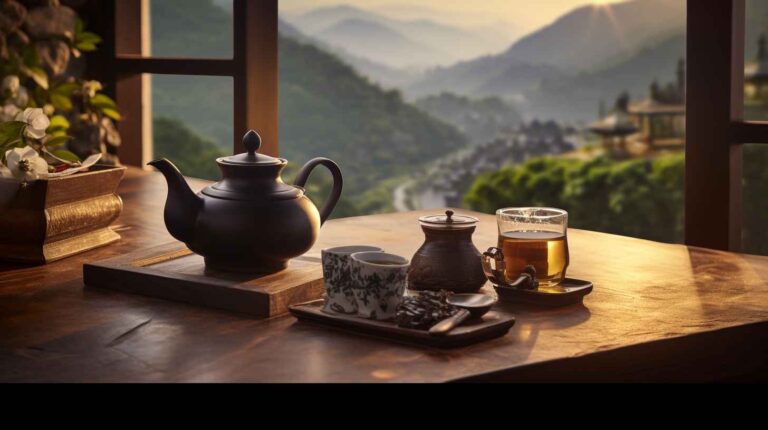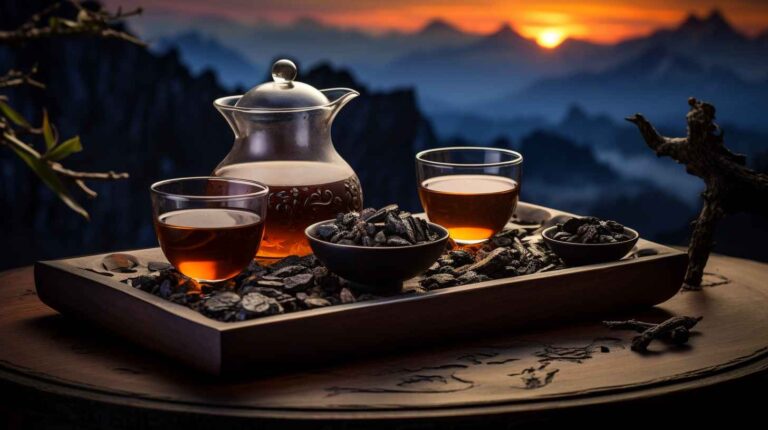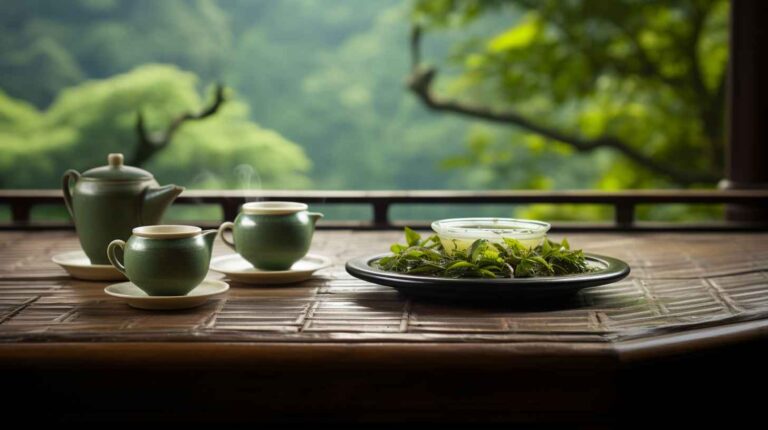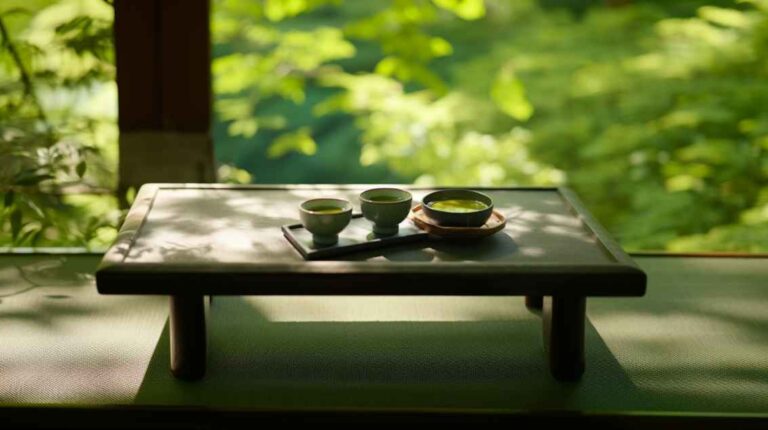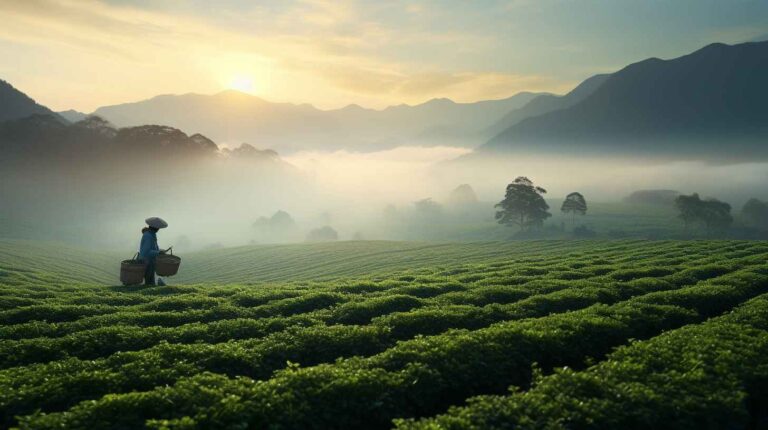Yellow Tea: The Hidden Gem of Chinese Tea Artistry
Introduction
For centuries, Chinese tea has been celebrated globally for its exceptional range and unmatched depth. From the vibrant green leaves of green tea to the robust flavors of black tea, each variety holds its own magic. But beneath these popular types lies a lesser-known, yet enchanting variant: Yellow tea. Often overshadowed by its more renowned counterparts, yellow tea is a treasure trove waiting to be discovered. In this discourse, we will journey through the serene landscapes of China’s tea plantations to unearth the secrets of this hidden gem.
History and Origins of Yellow Tea
Steeped in Time: The Ancestral Beginnings
The world of tea is as deep and rich as the history of China itself. Among its myriad teas, the yellow tea, or “huángchá” as locals fondly call it, stands out not only for its unique flavor but also its illustrious past. Tracing its roots back to the Tang and Song dynasties, yellow tea has been a silent witness to China’s evolving cultural and political landscapes.
While the annals of history provide varying accounts of its inception, many concur that yellow tea was a drink of the royals. Crafted with unparalleled precision and care, it was considered a beverage fit for emperors and nobles, symbolizing not only luxury but also the profound artistry of the tea makers.
The Imperial Connection
The corridors of the imperial palace echoed with tales of the Emperor’s favorites, and among them was a tea – Junshan Yinzhen. Emperor Qianlong of the Qing Dynasty, known for his discerning taste, held a particular fondness for this yellow tea. Such was his admiration that Junshan Yinzhen became synonymous with opulence, making its way into the courtyards of the elite and gradually to the homes of commoners. It’s fascinating how the palate of one emperor could shape the taste of an entire nation.
The Art of Crafting Yellow Tea
Picking the Right Leaves
The artistry of yellow tea begins right from the moment the first bud sprouts from the tea plant. As dawn breaks over the tea gardens, workers traverse the fields, carefully hand-picking only the finest buds, often recognized by their tender texture and a soft white fuzz that envelops them. This painstaking process ensures that the resulting brew is of the highest quality, embodying the essence of the tea plant.
Withering and Frying: The First Steps to Perfection
The journey from the gardens to the teapot is a meticulous one. Once the tea leaves are selected, they’re laid out in a serene setting to wither. This natural process allows the leaves to lose some of their moisture, paving the way for the next stage. The withered leaves are then treated to a gentle pan-frying, a technique that not only halts the oxidation process but also lays the foundation for the tea’s flavor profile. This step mirrors the process used in green tea production, showcasing the close ties between the two varieties.
The Unique “Yellowing” Process: A Labor of Love
However, what sets yellow tea apart from its green counterpart is the subsequent “yellowing” phase. Tea artisans, with generations of knowledge passed down to them, wrap the tea leaves in thick sheets or store them in specialized containers. This enclosed environment promotes a gentle oxidation process. Unlike the vigorous oxidation of black tea or the halted oxidation of green tea, this is a nuanced, delicate procedure. This can range from a few hours to several days, based on the tea variant and the outcome envisioned by the tea master. It’s this process, steeped in tradition and finesse, that bestows upon yellow tea its unique color and subtle flavor.
Distinct Varieties of Yellow Tea
Junshan Yinzhen (Silver Needle of Junshan Island)
Junshan Yinzhen, often likened to a piece of art, is a sight to behold. Sourced from the tranquil landscapes of Hunan Province’s Junshan Island, this tea is an exclusive blend of the finest buds. When steeped, the needle-like leaves gracefully dance in the water, their yellow hue reminiscent of golden sunsets. A sip reveals a symphony of flavors – the comforting warmth of toasted nuts combined with the sweetness of fresh corn, creating a harmonious balance that lingers.
Meng Ding Huang Ya: The Misty Mountain’s Gift
Meng Ding Huang Ya is a tribute to the awe-inspiring Meng Ding Mountain in Sichuan Province. This tea, with a blend of buds and young leaves, captures the essence of its misty origins. When brewed, it offers a palate-cleansing, refreshing taste, heightened by a subtle vegetal sweetness, reminiscent of the mountain’s lush greenery.
Huoshan Huang Ya: The Vibrant Blend
Emerging from the verdant expanses of Huoshan County in Anhui Province, Huoshan Huang Ya is a visual and sensory delight. Its vibrant green-yellow leaves exude an aroma that transports one to bamboo forests after a fresh rain. On tasting, it unveils a layered profile, with dominant notes of sweetness seamlessly intertwining with the savory umami, creating a mesmerizing experience.
Tasting Yellow Tea: A Sensory Experience
The Art of Savoring: Relishing the Subtleties
Yellow tea, often referred to as the poetic soul of the tea world, offers a sensory experience that’s unparalleled. Its flavor, distinct yet subtle, sets it apart from the more pronounced profiles of green or black teas. The beauty of yellow tea lies in its gentle nature. The mild oxidation it undergoes during the yellowing process ensures a smoother, mellower taste, devoid of the grassy overtones commonly found in green teas. Instead, what one experiences is a delicate sweetness that slowly unfolds, leaving a lasting impression on the palate.
The experience of savoring yellow tea can be likened to watching a sunrise. Just as the sun’s rays gradually illuminate the horizon, the flavors of yellow tea gently awaken the senses, culminating in a bright and resonant finish.
The Ritual of Brewing: Crafting the Perfect Cup
Every tea has its unique character, and to truly unveil its essence, one needs to master the art of brewing. Yellow tea, with its nuanced flavors, demands particular attention in this regard.
Water Quality: The foundation of a good tea lies in using pure water. For yellow tea, always opt for fresh, filtered water. Avoid distilled water as it lacks essential minerals that can elevate the tea’s flavor.
Temperature Control: Yellow tea is sensitive to temperature. Boiling water can scorch the delicate leaves, resulting in a bitter brew. The ideal temperature is just below boiling, around 80°C (175°F). For those without a thermometer, boil the water and let it sit for a minute before pouring it over the tea leaves.
Steeping Time: The magic of yellow tea unfolds gradually. Start by steeping it for 2-3 minutes. As you become familiar with its profile, you can adjust the steeping time to suit your preference. Remember, over-steeping can overshadow the tea’s subtle notes.
Teaware: Using a transparent glass or porcelain teapot can enhance the experience. Watching the tea leaves slowly unfurl is a visual treat, and these materials don’t retain flavors, ensuring that the tea’s profile remains untainted.
Health Benefits: A Brew That Nourishes Body and Soul
In the realm of health, yellow tea is a formidable contender. While most are aware of the health benefits of green or black teas, yellow tea remains an under-explored treasure trove of wellness.
Rich in Antioxidants: Yellow tea is abundant in catechins and polyphenols. These natural compounds combat oxidative stress, safeguarding the body from potential cellular damage and promoting overall health.
Heart Health: Studies suggest that regular consumption of yellow tea can contribute to cardiovascular health. The tea helps in reducing bad cholesterol levels and improving arterial function, thus supporting a healthy heart.
Anti-inflammatory Properties: The presence of natural antioxidants in yellow tea gives it potent anti-inflammatory properties. This can aid in alleviating conditions like arthritis and can also soothe internal inflammation.
Metabolic Boost: Yellow tea has been linked to enhanced metabolic function, making it a great addition for those aiming for weight management. Its natural compounds can help accelerate fat burning and regulate appetite.
Cognitive Support: There’s growing evidence that yellow tea can play a role in supporting cognitive functions. Regular consumption might aid in enhancing memory, focus, and overall brain health.
Conclusion
Yellow tea, with its storied past and intricate crafting process, is more than just a beverage. It’s a journey through China’s rich tapestry of history, culture, and artistry. While the world is well-acquainted with the likes of green and black teas, yellow tea remains an enigma, waiting to be explored.
Its refined flavors, visual beauty, and myriad health benefits make it a compelling choice for both seasoned tea connoisseurs and those new to the world of teas. As the global tea community continues its quest for unique and authentic experiences, yellow tea is poised to take center stage.
Every sip of yellow tea tells a story – of ancient emperors, dedicated artisans, and the tranquil landscapes of China. In a world that often moves too fast, pausing to savor a cup of yellow tea can be a moment of serenity, a reminder of the timeless beauty that exists if one only takes the time to seek it. Whether you embark on this journey out of sheer curiosity or a deep-rooted passion for teas, yellow tea promises a voyage of discovery, enchantment, and introspection.

